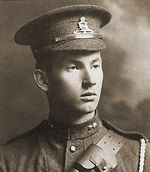Professor Emeritus Martin Friedland (BComm 1955 UC, LLB 1958) read from his official history of the university at the alumni association’s annual general meeting in June. The book will be released on U of T’s 175th anniversary in 2002. The following is an excerpt from the post-First World War period.
“The number of casualties was enormous. Over 6,000 connected with the university served in the active forces. About 10 per cent of that number – over 600 – died. Everyone on campus was affected by the deaths. President Loudon, for example, lost a son; so did Chancellor Meredith and former vice-chancellor Moss; and so did history professor George Wrong, German professor W.H. Van der Smissen and Alexander Primrose, later the dean of medicine.
“Others were wounded in battle. Among them were historian Frank Underhill and political economist Harold Innis. Underhill was wounded in the leg by shrapnel during the Battle of the Somme in 1918. Innis, who later came to Underhill’s defence when Underhill was threatened with dismissal for making anti-war statements, had enlisted after graduating in 1916. In July 1917, he and other signallers were on a reconnaissance mission on the then Allied-occupied Vimy Ridge. A German shell exploded behind them, and Innis was wounded in the leg and returned to England to recuperate at the Canadian hospital at Basingstoke. While there, to the great benefit of future scholarship in Canada, he read such classics as Marshall’s Principles of Economics.”





